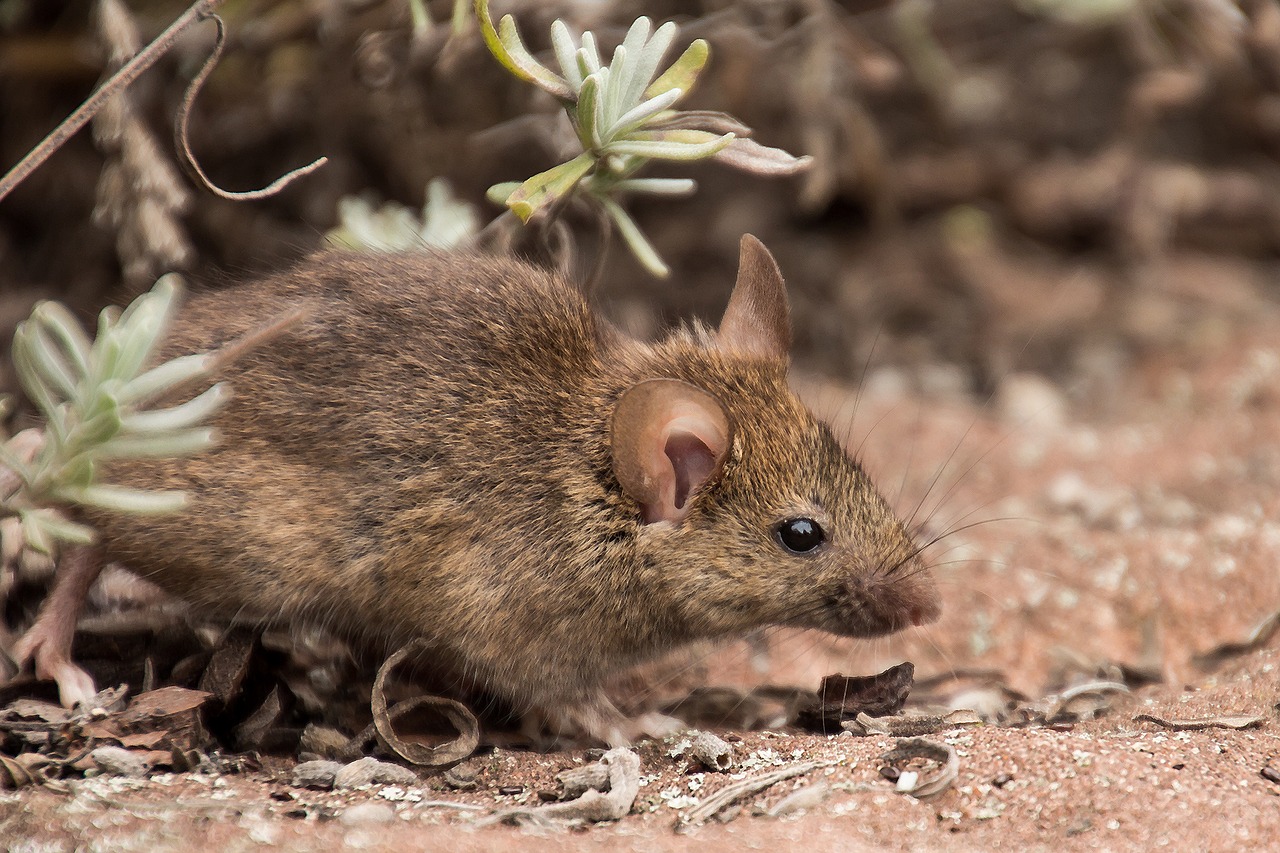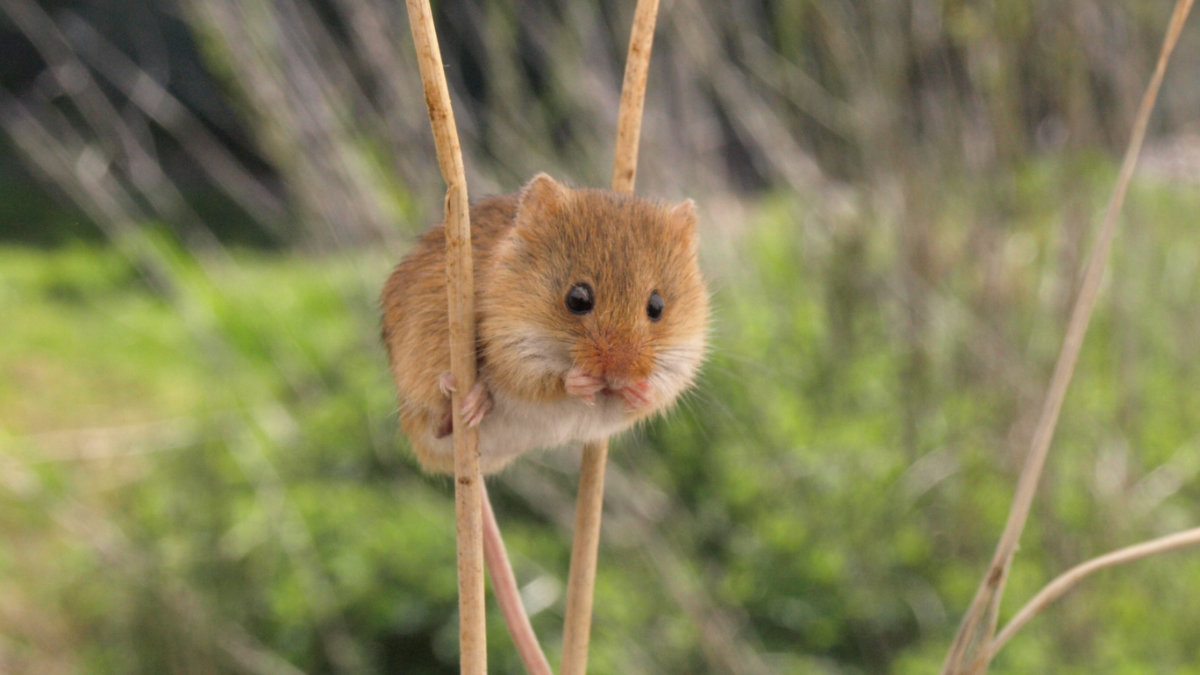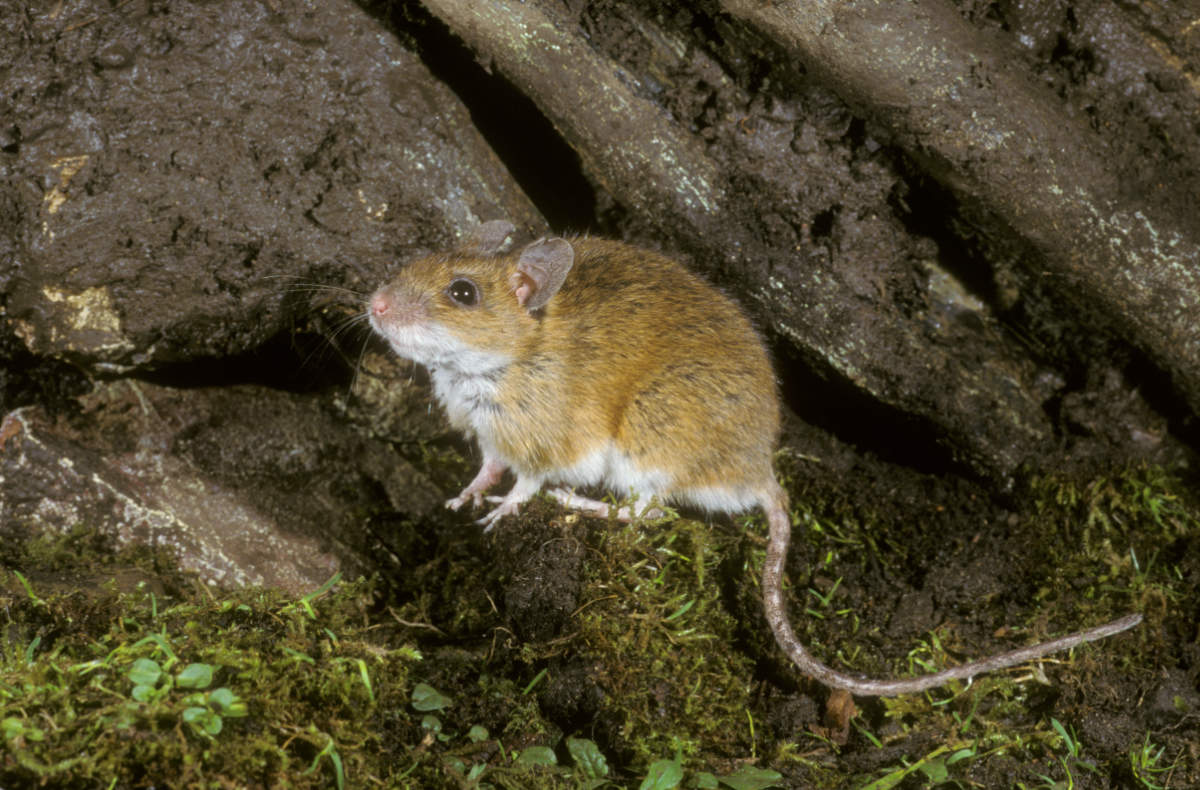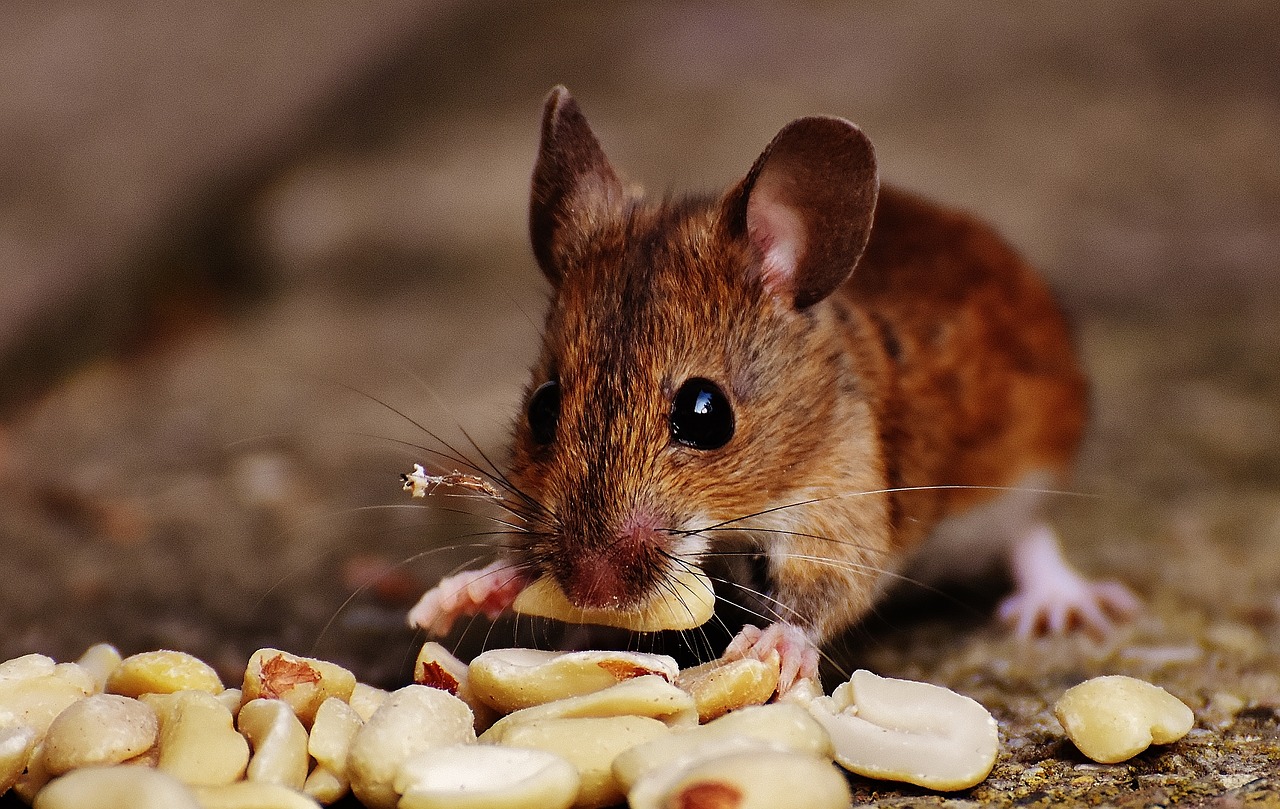Types of Mice in the UK – Mouse Identification & Facts
There are numerous types of mice in the United Kingdom, varying in size, average lifespan and physical appearance. If you’ve found a mouse in your garden or your house and want to know the species, or if you’d just like to find out the different mouse breeds in the UK and be able to distinguish between their differences, read our guide on mouse identification and become an expert. We’ll also provide interesting mouse facts like what different mice eat in the wild, their lifespans, what they look like, whether they hibernate and more.
Do You Have A Problem With Mice?
Mice are not only a nuisance, but they can also be dangerous.
British rodents identification – the different types of mice
Field mouse / wood mouse

Also referred to as a wood mouse, the field mouse has a sandy brown coat and a white/grey underbelly. The field mouse has large back feet to help with the spring in their step and a long tail that matches the length of their bodies.
Field mice facts:
- What’s the lifespan of a field mouse?
Due to wise predators and exposure to dangerous environments, a field mouse lifespan is usually around 1 year. In good conditions, however, the field mouse can live up to 3 years.
- What do field mice eat?
Field mice eat seeds from trees, fruits, berries, nuts, fungi and will also tuck into a snail or two.
- Do field mice hibernate?
Field mice do not hibernate; they stay active throughout the winter but will find a cosy spot indoors and journey outside for food – if food inside is in short supply.
House mouse

The house mouse has a brown-grey fur coat that covers the length of their tails too – their tails are the most distinctive out of all the mice in the UK – they look almost hairless and are much thicker and scalier than the other species of mice. The house mouse has big eyes, ears and a long, pointed snout and all of their feet are small, unlike the field mouse who has distinctively large back feet.
House mice facts:
- What’s the lifespan of a house mouse?
If living outdoors, a house mouse lifespan will generally be up to 1 year, but indoors, a house mouse can live up to 3 years.
- What do house mice eat?
House mice need to eat up to 3 grams of food each day. They favour cereals – so watch out, they might just eat your breakfast. Typically they will feed on fruits, seeds and grains.
- Do house mice hibernate?
House mice do not hibernate; they simply nest in our settlements where there’s warm shelter and plentiful food.
What’s the difference between a house mouse and field mouse?
Although it may be hard to distinguish one mouse from another, the house mouse and the field mouse do have some differences that can help you tell them apart. Here are tips for identification of house mouse vs a field mouse:
- Differences in what house mice and field mice look like
The house mouse has a fair brown/grey coat with a pink tail and the field mouse has a sandy brown coat with a white/grey underbelly and dark tail with no fur underneath.
- Feeding habits
A field mouse tends to store ample food because of their mostly outdoor lifestyle and therefore will hide seeds and other foods in and around their nests. House mice tend to eat as soon as they have found the food because, generally, they nest in areas where food is abundant.
- Habitats
As their names suggest, field mice generally nest in fields and meadows and house mice like to nest in homes where it’s warm and cosy. That said, the field mouse will nest in our homes when temperatures drop and house mice will nest outdoors if they find a consistent food supply.
Harvest mouse

The harvest mouse is the smallest rodent throughout Europe, and the only British rodent with a prehensile tail – which means it can grasp things to help them to control and handle objects and move quickly through the long grass.
Harvest mice facts:
- What’s the lifespan of a harvest mouse?
The harvest mouse lifespan is typically around 18 months but it can live up to 5 years in captivity.
- What do harvest mice eat?
Harvest mice feast on delicious sweet fruits, seeds and on occasion, soft-bodied invertebrates such as slugs and snails.
- Do harvest mice hibernate?
Although harvest mice are less active throughout the winter, they do not hibernate. They stay hidden for warmth in the cold months and will store food in their nests to sustain them.
Yellow-necked mouse

As their name suggests, yellow-necked mice have a yellow strip of fur around their necks, but they are subtle and can be easily mistaken for the field mouse. The key way to tell these species apart is by the white bib, found under the chin of a yellow-necked mouse. The yellow-necked mouse is generally bigger than the rest of the mouse species found in the UK and can grow up to 10cm long.
Yellow-necked mice facts:
- What’s the lifespan of a yellow-necked mouse?
The yellow-necked mouse has a very short life expectancy of 3-4 months.
- What do yellow-necked mice eat?
Yellow-necked mice eat nuts, fruits, seeds, shoots and insects.
- Do yellow-necked mice hibernate?
Yellow-necked mice do not hibernate but they will snuggle together in the cold winter months in order to generate warmth from their body heat.
What’s the difference between a harvest mouse and a yellow-necked mouse?
There are subtle differences between all UK mice species and there’s no exception when it comes to finding those between a harvest mouse and a yellow-necked mouse.
- Differences in what harvest mice and yellow-necked mice look like
Yellow-necked mice have a ginger tinge to their coats and a subtle yellow band around their necks, whereas harvest mice have a golden-brown coat and a pale underbelly. - Feeding habits
Yellow-necked mice enjoy all the same foods as a harvest mouse but yellow-necked mice will venture indoors to indulge in stored foods. - Habitats
Harvest mice prefer to live outdoors, underground and yellow-necked mice will nest in hedgerows.
What’s the difference between mice, voles and shrews?
Small rodents can easily be mistaken for one another – it’s so easily done. Shrews and voles are two small mouse like animals that have a lot of similarities with mice, but what are the differences between mice, voles and shrews?
Mice

Your typical mouse in the UK has large eyes and ears, a pointed snout and a long tail. In the UK you can find six different types of mouse. Five of them are native and the sixth, the dormouse, was brought to Hertfordshire in 1902 and is rare to see in the wild. Most of the mice in the UK have a lifespan of a year, but in protected environments they can live up to three years, and for the rare dormouse, their life expectancy can be that of 5 years. Mice are rodents and they fall into this classification because their incisors constantly grow throughout their lifetime.
Voles

You can spot voles by their small eyes and ears, short tails and rounded snouts. There are four species of vole in the UK, with three found in mainland Britain: the bank vole, field vole, water vole and the Orkney vole – found on the Orkney Islands – hence their name. The average lifespan of a vole is between 3 months and 1 year, generally the larger the vole, the longer it’ll live. For example, the water vole can live up to 18 months. Voles also fall into the rodent classification because they too have incisors that continuously grow.
Shrews

These small eyed and eared, short tailed and pointy snouted creatures can be found on mainland Britain. They may be mistaken for a mouse with a long nose. There are four types that can be found out on a walk in grassy areas or in your garden, with the rarest found in Jersey, Sark and on the Isles of Scilly. Shrews have a lifespan of up to 1 year and they are in fact, not rodents. Shrews are grouped into a classification called Eulipotyphla – aka, insectivores. Although shrews typically look more like mice and voles, shrews are placed into the same group as hedgehogs and moles.
Mouse facts
UK mice species
- The field/wood mouse is also known as: Apodemus sylvaticus
- The house mouse is also known as: Mus musculus
- The harvest mouse is also known as: Micromys minutus
- The yellow-necked mouse is also known as: Apodemus flavicollis
Mouse identification in the UK
- Field mice – weigh up to 19g, measure up to 8cm in size
- House mice – weigh up to 19g, measure up to 10cm in size
- Harvest mice – weigh up to 7g, measure up to 6cm in size
- Yellow-necked mice – weight up to 28g, measure up to 10cm in size
Pest Defence offer each and every customer a great wealth of experience within the pest industry and can provide a seamless service thanks to our team of highly trained, qualified professionals. Our emergency call-out service guarantees a quick response, 7 days a week because we understand the importance of tackling a pest infestation as soon as possible. For effective mouse control or other pest treatment, call today.
Recent posts
- When Are Wasps Most Active?
- There Are Wasps in My Loft! What Should I Do?
- 4 Signs of a Wasp Nest To Look Out For
- The Different Types of Wasps Found in the UK
- Do Mice Carry Diseases?
- What Scent Will Keep Mice Away?
- Can Mice Get Upstairs?
- Where Do Pigeons Make Nests?
- How To Treat A Wasp Sting
- Is There A Rat Problem In London?
See if we cover your area
If you would like to know if we cover your area enter your postcode below.
